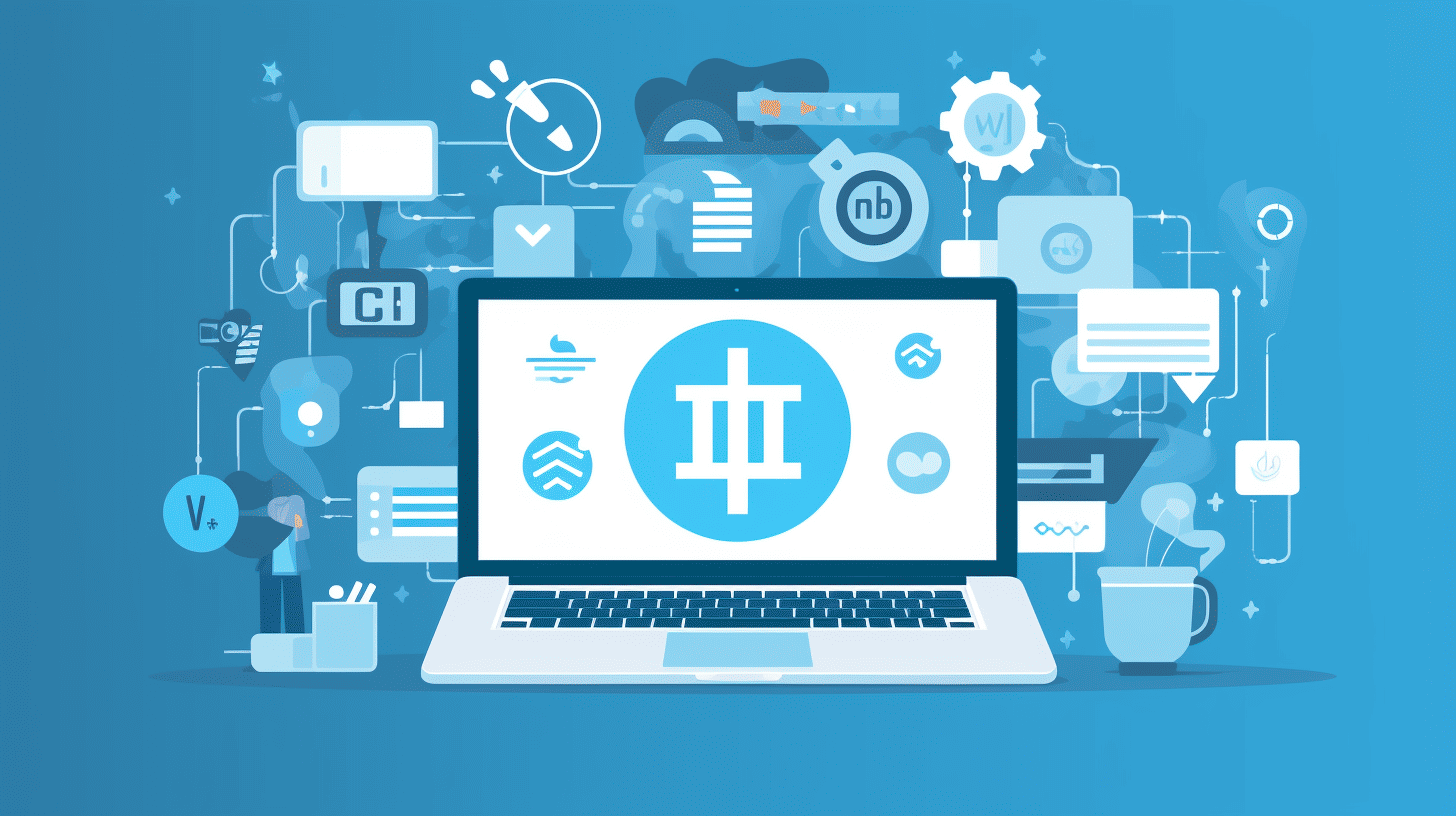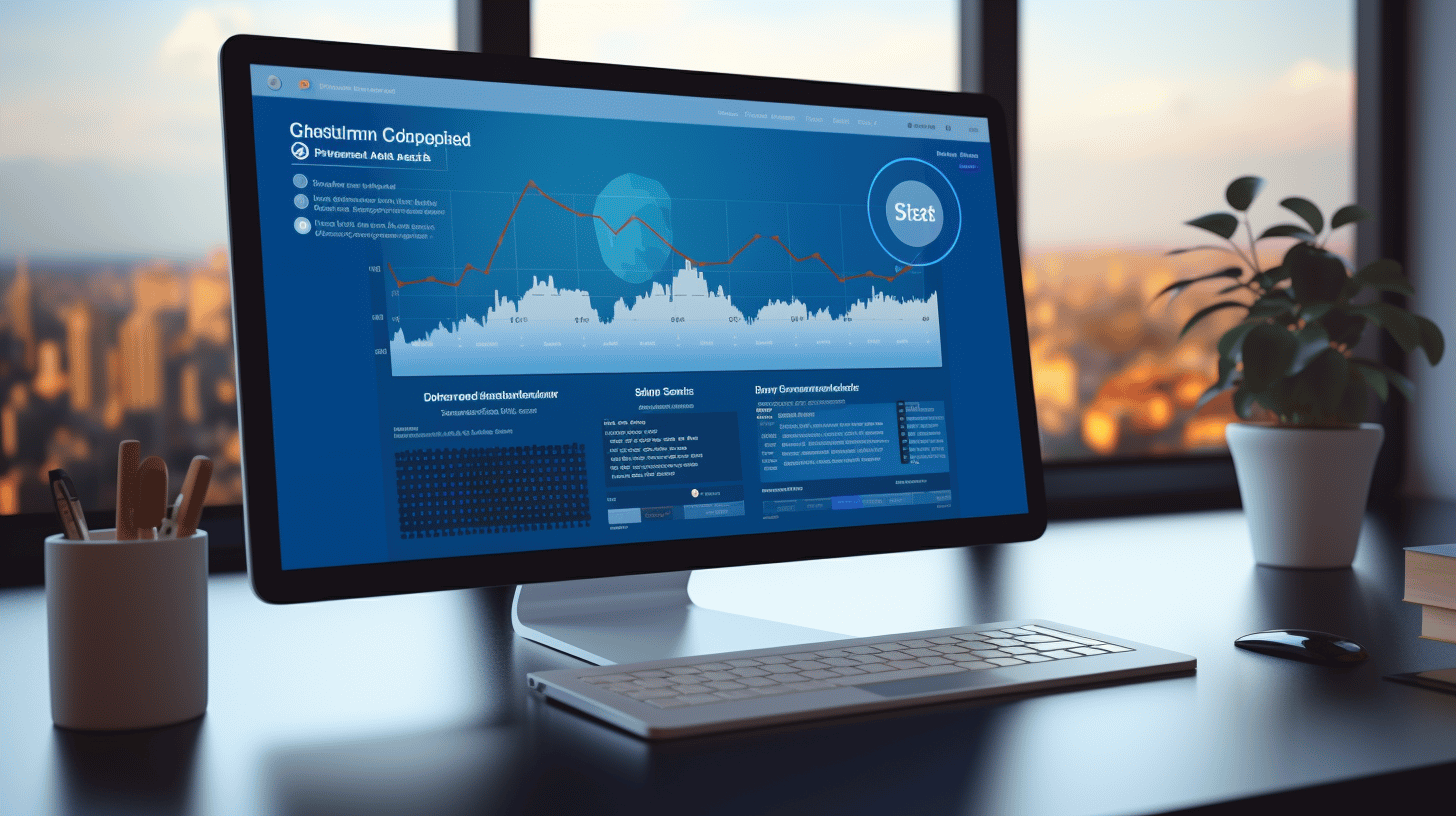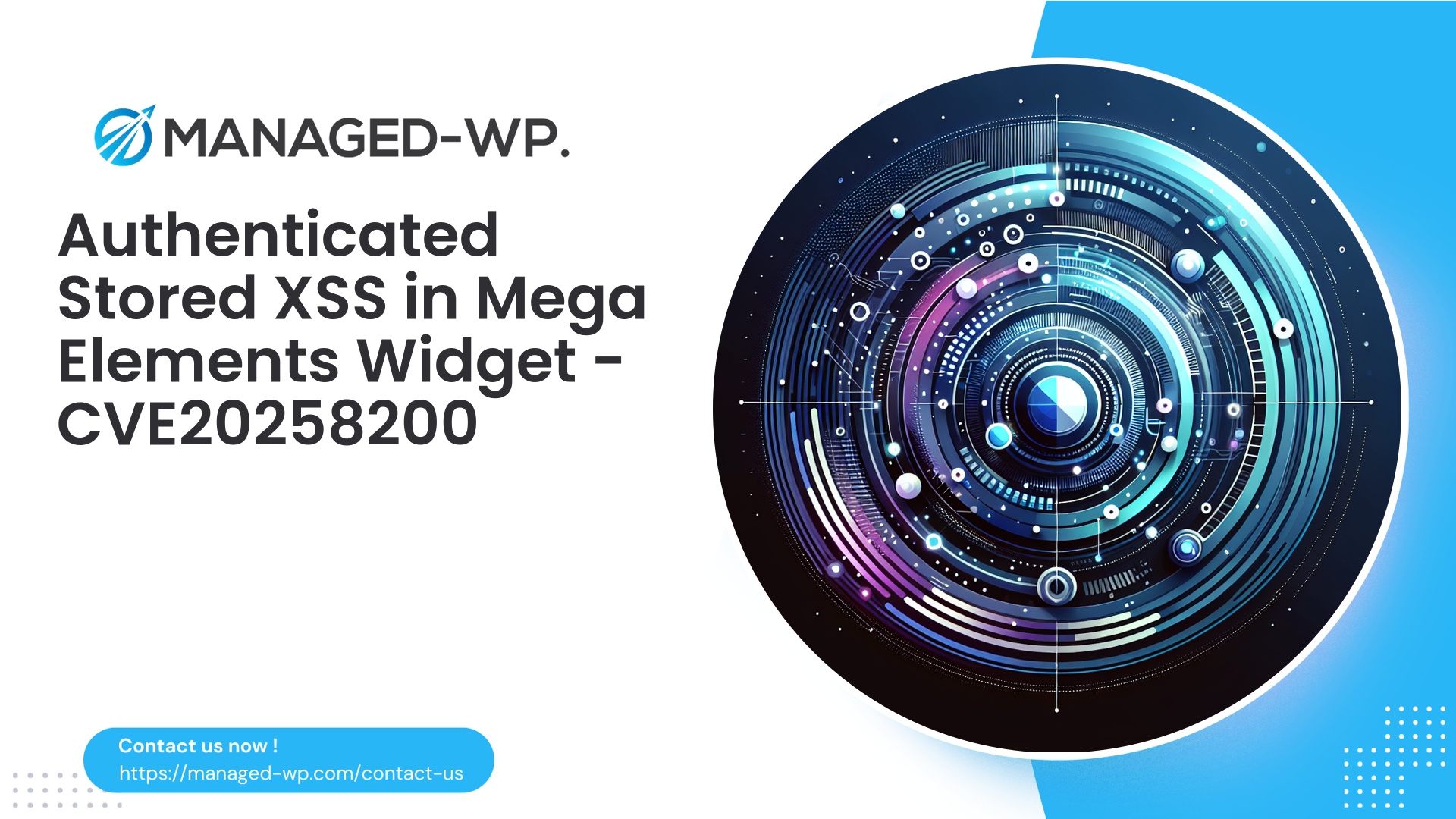| 插件名稱 | WP Ticket客戶服務軟體及支援工單系統 |
|---|---|
| 漏洞類型 | 跨站腳本 (XSS) |
| CVE編號 | CVE-2025-60157 |
| 緊急 | 低的 |
| CVE 發布日期 | 2025-09-26 |
| 來源網址 | CVE-2025-60157 |
WP Ticket(版本 <= 6.0.2)— 嚴重 XSS 漏洞 CVE-2025-60157:WordPress 網站管理員必備指南
發布日期: 2025年9月26日
CVE標識符: CVE-2025-60157
受影響的插件: WP Ticket客戶服務軟體及支援工單系統
易受攻擊的版本: <= 6.0.2
已修復版本: 6.0.3
利用該漏洞所需的權限: 貢獻者(低階使用者角色)
嚴重程度評分(CVSS): 6.5(中等)
作為您在 Managed-WP 的專屬網路安全合作夥伴,我們致力於為您提供有關影響 WP Ticket 的 CVE-2025-60157 漏洞的可操作情報和專家建議。本簡報概述了風險性質、切實可行的補救措施,以及 Managed-WP 的分層安全解決方案如何在修補程式更新期間為您的防禦提供支援。
執行摘要
- 已發現漏洞:影響 WP Ticket 版本 6.0.2 及更高版本的反射/儲存型跨站腳本 (XSS) 問題。
- 威脅向量:擁有最低貢獻者角色權限的攻擊者可以將惡意腳本注入管理員和其他使用者可以存取的工單內容中。
- 解決方案:WP Ticket 版本 6.0.3 已修正此漏洞。必須立即更新。
- 臨時緩解措施包括:盡可能停用外掛程式、限制貢獻者權限、啟用 WAF 規則以阻止 XSS 有效負載以及執行內容審核。
- Managed-WP 客戶可受益於虛擬修補程式和主動 WAF 規則,這些規則可在部署官方修復程序時最大限度地減少風險。
利害關係:理解其重要性
跨站腳本攻擊(XSS)仍然是一種普遍存在的攻擊手段,因為它能夠破壞使用者會話、注入惡意程式碼並促進進一步的利用。即使在某些框架中,XSS 的優先順序被評為中等或“低”,但當未經授權的使用者能夠觸發有效載荷注入時,XSS 風險仍然需要立即重視。
此漏洞尤其令人擔憂,因為貢獻者(通常被允許提交工單或內容)無需更高權限即可利用此漏洞。其後果包括:
- 透過竊取身分驗證 cookie 來劫持使用者會話
- 部署二次惡意軟體負荷,導致網頁篡改或資料外洩
- 當特權使用者查看受感染的工單時,以管理員身分執行操作。
- 將訪客重新導向到詐欺或有害網站
如果票務內容顯示在外部電子郵件或公開檢視中,則您的營運風險會放大。
技術分解
此漏洞源自於輸入驗證不足和輸出清理不當:
- 使用者在工單欄位中輸入的內容在渲染前沒有得到正確的清理或轉義。
- 擁有貢獻者等級存取權限的攻擊者可以將 HTML 或 JavaScript 嵌入到工單資料中。
- 當向其他人(尤其是特權使用者)顯示時,有效載荷會執行,從而危及會話或網站的完整性。
根據 OWASP 風險分類,這屬於注入攻擊(A3),具體來說是跨站腳本攻擊,這是由於插件的輸出處理例程中轉義不足造成的。
哪些人應該關注?
- 執行 WP Ticket 版本 6.0.2 或更低版本的網站。
- 允許具有貢獻者等級角色或類似低權限的訪客或使用者造訪的網站。
- 管理員、版主或具有較高權限的使用者可以看到票務內容的網站。
- 將票務資料轉發或嵌入到使用 HTML 渲染的電子郵件或其他系統中的網站。
如果存在這些情況,請優先盡快緩解此漏洞。
立即採取的因應措施(24小時內)
- 立即更新插件
取得並安裝 WP Ticket 6.0.3 或更高版本,該版本已完全解決此漏洞。 - 如果無法立即更新:
- 暫時停用或停用 WP Ticket 外掛程式。
- 限制建立新的貢獻者帳戶並審核現有帳戶。
- 調整工單提交設置,僅允許已驗證身分的受信任使用者提交工單。
- 啟用嚴格的 HTML 清理
啟用或設定工單輸入框的 HTML 過濾功能,以防止腳本標籤或危險屬性。 - 部署 Web 應用程式防火牆 (WAF) 規則
套用 WAF 過濾器,檢查並阻止工單提交和顯示路徑中的常見 XSS 攻擊負載。 Managed-WP 預設為客戶提供這些保護措施。 - 惡意載重的審核工單內容
搜尋您的票務數據,尋找腳本標籤、事件處理程序、javascript: URI 或混淆程式碼。 - 查看管理存取日誌
偵測與潛在惡意工單提交同時發生的異常管理員登入或活動。 - 備份站點和資料庫
準備離線備份,以保存取證證據並在需要時進行還原。
檢測指南:需要注意哪些方面
檢查您的工單和訊息存儲,尋找可疑跡象,包括但不限於:
- 文字
標籤或編碼表示 - XSS攻擊中常見的濫用屬性:
錯誤=,onload=,滑鼠懸停=,點選= - JavaScript URL 和資料 URI:
javascript:,data:text/html - 編碼後的有效載荷或高度混淆的字串
- 意外的 iframe、embed 或 object HTML 標籤
如果發現可疑條目,請隔離並清理受影響的票據,並更新憑證以防萬一。
開發者建議
對於管理工單內容的外掛程式或主題開發者:
- 轉義所有輸出:
- 使用
esc_attr()用於HTML屬性。 - 使用
esc_html()或者wp_kses()用於內容輸出。 - 使用
esc_url()適用於網址。
- 使用
- 對輸入內容進行清理:
sanitize_text_field()用於純文字輸入。wp_kses_post()或自訂允許的 HTML 清單。
- 對相關表單強制執行隨機數驗證和功能檢查。
- 避免在範本中直接渲染未經篩選的使用者輸入。
- 使用者角色之間應遵循最小權限原則。
- 實施內容安全策略 (CSP) 標頭以限制腳本執行。
- 建立和編輯日誌願者單,以識別異常情況。
輸出清理範例:
- 不安全:
echo $ticket_message; - 更安全:
echo wp_kses( $ticket_message, $allowed_html ); - 嚴格的:
echo esc_html( $ticket_message );(移除所有HTML程式碼)
長期安全增強
- 保持 WordPress 核心、主題和外掛程式的最新版本,並在生產環境部署前在測試環境中進行測試。
- 透過強大的角色管理功能,限制擁有「貢獻者」及更高權限的使用者數量。
- 對管理員和敏感帳戶部署多因素身份驗證(MFA)。
- 對帳戶管理和可疑工單提交實施全面的日誌記錄和警報機制。
- 定期使用各種偵測方法(靜態、動態、行為)掃描您的網站是否有漏洞和惡意軟體。
- 使用安全的 HTTP 標頭(CSP、X-Content-Type-Options、X-Frame-Options、Referrer-Policy)。
- 實施嚴格的備份制度,包括異地儲存和經過驗證的復原程序。
- 對客服人員進行培訓,使其能夠識別可疑的工單內容和社交工程攻擊。
如果您懷疑有主動攻擊行為
- 如果可能,請將受影響網站與網路隔離。
- 確保備份資料安全,並保留日誌以供取證審查。
- 用已知無損版本取代受損檔案。
- 輪換所有可能因 XSS 而暴露的敏感憑證(管理員帳戶、API 金鑰)。
- 徹底清除資料庫中的惡意內容。
- 對文件和定時任務進行完整的惡意軟體掃描。
- 尋找隱藏的管理員使用者或未經授權的修改。
- 當修復措施無法保證完全清除資料時,請從乾淨的備份中復原。
- 如果安全漏洞範圍廣泛,請聘請專業的事件回應服務機構。
Managed-WP 如何保護您的 WordPress 網站
Managed-WP 提供了一個全面的安全平台,透過以下方式完善您針對 CVE-2025-60157 等漏洞的修補策略:
- 在 HTTP 邊界部署針對 WP Ticket XSS 模式的精確 WAF 簽章。
- 提供虛擬補丁,即使在插件更新之前也能阻止漏洞嘗試。
- 監控流量行為,以標記異常的工單提交和內容變更。
- 安排惡意軟體掃描,以偵測其他防禦措施遺漏的注入腳本或後門。
- 建議採用角色策略配置來降低低權限帳號帶來的風險。
- 擷取包括有效載荷資料和使用者/IP上下文在內的詳細事件日誌,以加快調查速度。
這些層協同作用,最大限度地減少您在進行徹底修復時可能遇到的問題。
WAF 和 IDS 的偵測規則範例
安全團隊應實施以下檢測標準:
- 阻止包含以下內容的 POST 請求
票務端點中的標籤或編碼變體。 - 過濾可疑屬性,例如
錯誤=,點選=,onload=在提交的參數中。 - 標記高熵或混淆的 JavaScript 字串。
- 對來自單一 IP 位址或使用者代理程式的重複可疑提交進行速率限制。
- 監控意外的內容類型(例如,在預期為純文字的欄位中出現 text/html)。
調整這些規則,使其範圍限定於已知的工單提交和管理端點,從而最大限度地減少誤報。在採取激進的阻止措施之前,請考慮添加質疑或監控模式。
使用者權限管理的關鍵作用
這個 XSS 漏洞說明了控制「貢獻者」權限的重要性。許多 WordPress 網站允許開放註冊,導致攻擊者利用低階角色來升級攻擊。 「貢獻者」角色雖然不能發布文章,但仍然可以向插件(包括工單系統)提交內容,這使其成為注入攻擊的主要途徑。
建議的做法包括:
- 除非必要,否則禁用公開註冊。
- 要求對新貢獻者進行郵箱驗證和手動審核。
- 預設僅分配訂閱者等最低限度的角色。
- 在註冊表和票務提交表單上部署驗證碼或垃圾郵件過濾器。
常見問題 (FAQ)
Q:升級到 6.0.3 版本能完全保護我的安全嗎?
答:更新可以移除存在漏洞的程式碼路徑,但如果漏洞利用發生在更新之前,您也必須審核並清理系統。僅靠更新無法修復已發生的安全漏洞。
Q:我可以完全依賴網頁應用程式防火牆嗎?
答:不。 WAF 是一項重要的防禦措施,但它是對及時打補丁、安全編碼實踐和嚴格管理的補充,而不是替代品。
Q:如何處理嵌入在電子郵件或第三方應用程式中的票務內容?
答:檢查這些通道是否有惡意載重,因為如果在支援 HTML 的用戶端中呈現,XSS 可能會執行。
Q:如果管理員已經查看了受感染的工單怎麼辦?
答:假定存在會話和憑證風險。強制註銷所有會話,重置密碼,並相應地輪換 API 金鑰。
網站所有者實用檢查清單
- 請確認目前 WP Ticket 版本。如果版本低於或等於 6.0.2,請立即更新至 6.0.3。
- 如果無法更新,請停用該外掛程式或限制提交工單,直到修復為止。
- 掃描票務內容庫,尋找可疑腳本和程式碼。
- 限制註冊和貢獻者角色分配;需要管理員批准。
- 啟用針對工單提交中的 XSS 有效載荷的 WAF 或虛擬修補規則。
- 執行全面惡意軟體掃描,必要時恢復乾淨的備份。
- 請及時更改管理員和敏感憑證。
- 審核異常活動日誌並封鎖可疑IP位址。
- 加強處理票據內容的自訂程式碼,防止注入攻擊。
- 制定並實施定期更新周期,並進行階段性驗證。
Managed-WP 客戶回應指南
- 啟動 Managed-WP WAF,使其自動接收和套用虛擬補丁,從而阻止 XSS 攻擊向量。
- 利用內容掃描和定期資料庫稽核來發現注入的有效載荷。
- 利用詳細的請求日誌記錄和警報功能來監控被阻止的攻擊嘗試。
- 在您的服務等級下,安排 Managed-WP 安全工程師提供事件補救和驗證支援。
立即行動:使用 Managed-WP 保護您的網站安全
為了在修補程式和稽核階段獲得即時保護,請考慮採用 Managed-WP 的安全平台。我們的免費套餐提供經過驗證的防火牆保護、強大的 Web 應用防火牆 (WAF)、惡意軟體掃描以及對關鍵 OWASP 風險的覆蓋範圍——這是降低 XSS 及相關威脅風險的重要基礎。
從這裡開始,您的網站將擁有在 HTTP 層運行的主動防禦措施,包括虛擬修補程式和可疑內容偵測,從而爭取關鍵時間並降低被攻擊的風險。
最終建議
- 立即為 WP Ticket 外掛程式打補丁;6.0.3 版本更新是您的主要防御手段。
- 將此 XSS 漏洞視為操作流程:先修補,然後掃描並清除任何遺留感染,接著進行持續監控。
- 採用多層防禦策略,包括 WAF、權限管理、安全開發實務和備份規格。
- 如果您的組織缺乏內部能力進行充分應對,請聘請專業的安全資源。
如果您的 WordPress 網站支援公開或半可信的工單提交,請注意,機會主義攻擊者正在積極掃描類似 CVE-2025-60157 的漏洞。快速且務實的緩解措施——更新、角色強化和虛擬修補程式——可以顯著阻止攻擊者,同時您可以實施更長期的安全措施。
Managed-WP 的免費安全計畫提供專家評估、虛擬修補程式應用和掃描支持,可立即提供基線保護和關鍵營運情報: https://my.wp-firewall.com/buy/wp-firewall-free-plan/
作者: 託管 WordPress 安全團隊
我們是總部位於美國的網路安全專家,專門從事 WordPress 保護,致力於幫助網站所有者快速緩解漏洞、部署虛擬修補程式並建立持久的安全實踐。



















